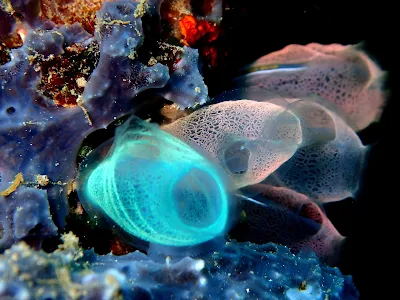Things you should know about Skeleton Panda Sea Squirts
You’ve probably never heard of skeleton panda sea squirts, but they’re actually one of the most interesting creatures in the ocean! With only two known species in existence, you’d think they would be pretty rare, but their population is actually exploding thanks to overfishing and climate change! Learn more about them in this article!
What are skeleton panda sea squirts?
Sometimes called sea monkeys, skeleton panda sea squirts are a variety of marine organisms commonly sold as novelty pets. In truth, they’re no more closely related to monkeys than humans. What people call skeleton panda sea squirts aren’t even real sea squirts—they belong to an entirely different group of animals, called Chaetognatha. Panda sea squirt might be a more accurate name for these odd and fragile creatures. Skeleton panda sea squirts do resemble their close relatives, and they can also adopt some cool poses thanks to their sticky skin, but that's about it when it comes to similarities between them and Earth's beloved giant pandas. These small marine invertebrates may be interesting in their own right, but they certainly don't deserve to share a nickname with one of our planet's most majestic creatures. There is something else though: They're just plain adorable! They're almost like tiny alien puppets or something! No wonder why so many people find them fun to keep around. It doesn't hurt your pocket as they cost low. That makes these quirky little critters affordable enough for most kids and teens looking for new pets (but not nearly as expensive as a real live dog or cat).
Sea squirts are characterized by their unusual ability to regenerate body parts such as nerves, skeletal muscle tissue, and skin. This regeneration even extends to re-growing eyes that have been eaten. In sea squirts, eyes can re-grow with approximately 60% of their original function compared to a 100% re-growth rate in starfish.
 |
| skeleton panda sea squirts |
Where do they live?
Pandalus borealis live in temperate oceans around North America and Europe. As adults, they can be found on rocky shores and mussel beds, hanging out where there’s lots of space, little light and lots of currents. They like to eat mussels but also munch on plants or algae when no mussels are around. You can find them right now near Vancouver Island in British Columbia; Florida; Long Island (New York); Maine; Nova Scotia; Massachusetts; Rhode Island; Connecticut/Rhode Island Canal/Providence River; Chesapeake Bay (Maryland); Delaware Bay (Delaware); Bermuda/Andros Islands, Bonaire, and Aruba all have populations of skeleton panda sea squirts too!
How do they look like?
A skeleton panda sea squirt is similar to a creature we might see on a sci-fi movie, it is short and looks like a hedgehog from above. It has two eyes like any other sea creature. The skeleton panda’s body color is usually dark brownish. It has also two front fins which help them swim through water and move around easily. They have an interesting feature that helps them blend in with their surroundings; they are able to change their colors depending on where they are. When they are in deep waters, they turn white so that predators won’t be able to find them easily. When they are close to shore or shallow waters, they turn black so that their predators will not notice them as much when hunting for food.
This animal does not have gills because it does not need oxygen from water; instead it uses its lungs just like humans do. It eats plankton just like most of its relatives do but unlike some of its relatives who eat algae and plants, skeletons panda sea squirts eat only plankton.
Do they have teeth?
Unlike a lot of other sea squirts, skeleton panda sea squirts have no teeth. Their tentacles are made up of sensitive cells that allow them to seek out food. They are filter feeders so they feed on plankton, algae and other microorganisms in their environment. These protists have a remarkably short lifespan with some growing to only 3mm long and others having been found measuring up to 38mm. They appear during summer months when temperatures rise above 20 ̊C, but sadly it’s not believed that they can swim or move from their location.
Do they have sex organs?
How they reproduce? These bizarre creatures do not have sex organs. They reproduce via broadcast spawning, in which they release their eggs and sperm into open water, with no specific mating ritual to speak of. When is it appropriate to use scare quotes in a sentence? There are two general rules: when it's not quite right to use italics (such as a book title) and for emphasis. Unfortunately, there isn't really an established rule for using scare quotes, but try to avoid using them more than once per page and limit your usage to things that are truly absurd or difficult to believe.
What kinds of behaviors do they have?
Skeleton panda sea squirts are relatively passive, moving very little unless they need to. If a predator threatens them, they will jet away in short bursts of speed to get out of harm's way. They generally behave similarly to other sessile filter feeders, mostly hanging out and waiting for food to float by. But it isn't all work for these guys. Their play behavior varies from species to species but one thing is certain: sea squirts have a sense of humor! In some species, not only will they take time out from feeding to splash around with each other, but their play fighting has been observed with behaviors such as pushing and shoving—or even actually riding on top of another!
